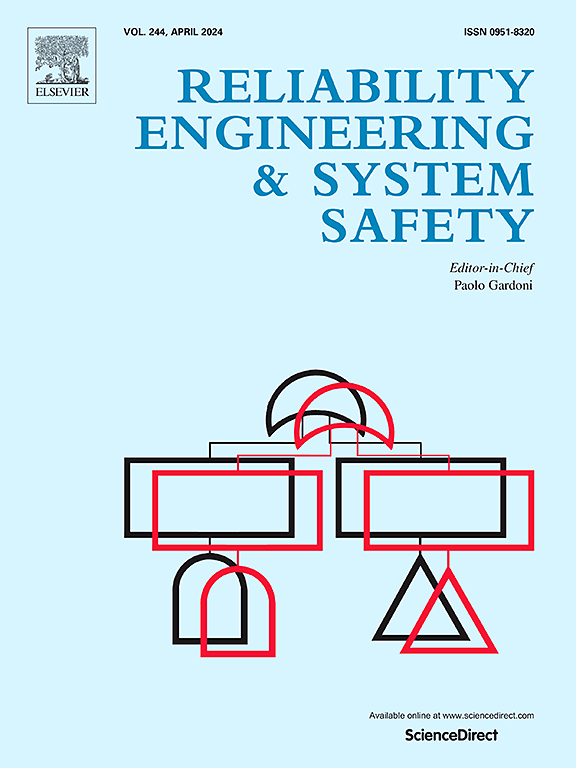基于深度强化学习损伤演化的冲击系统动态状态维护
IF 9.4
1区 工程技术
Q1 ENGINEERING, INDUSTRIAL
引用次数: 0
摘要
在工业领域,维护任务和资源需要分配给工业系统,以避免意外停机。我们探索了由多个组件组成的系统的动态状态维护策略,其中每个组件都随着时间的推移承受外部冲击并单独维护。对于每个组件,随机冲击遵循均匀泊松过程到达,并且组件状态的演变使用马尔可夫过程表征。提出了一种基于状态的动态维修策略,将其描述为马尔可夫决策过程。为了使整个系统成本最小化,讨论了维修优化问题,以确定最具成本效益的维修行动。针对深度强化学习的高维问题,提出了一种定制化的优势行为者-批判算法。最后,通过数值算例验证了该方法在寻找最优维修行为和降低维修成本方面的有效性。本文章由计算机程序翻译,如有差异,请以英文原文为准。
Dynamic condition-based maintenance for shock systems based on damage evolutions using deep reinforcement learning
In the industry domain, maintenance tasks and resources need to be allocated to industrial systems to avoid unplanned downtime. We explore the dynamic condition-based maintenance strategy for systems comprising multiple components, in which each component undergoes external shocks along with time and is maintained individually. For each component, random shocks arrive following a homogeneous Poisson process, and the evolution of the component’s state is characterized using a Markov process. The dynamic condition-based maintenance policy for the developed shock system, depicted as a Markov decision process, is introduced. To minimize the overall system cost, the maintenance optimization problem is discussed to determine the most cost-effective maintenance actions. A tailored advantage actor-critic algorithm in deep reinforcement learning is proposed to address the challenge of high dimensionality. Finally, numerical examples demonstrate the efficiency of the proposed method in searching for optimal maintenance actions and reducing maintenance costs.
求助全文
通过发布文献求助,成功后即可免费获取论文全文。
去求助
来源期刊

Reliability Engineering & System Safety
管理科学-工程:工业
CiteScore
15.20
自引率
39.50%
发文量
621
审稿时长
67 days
期刊介绍:
Elsevier publishes Reliability Engineering & System Safety in association with the European Safety and Reliability Association and the Safety Engineering and Risk Analysis Division. The international journal is devoted to developing and applying methods to enhance the safety and reliability of complex technological systems, like nuclear power plants, chemical plants, hazardous waste facilities, space systems, offshore and maritime systems, transportation systems, constructed infrastructure, and manufacturing plants. The journal normally publishes only articles that involve the analysis of substantive problems related to the reliability of complex systems or present techniques and/or theoretical results that have a discernable relationship to the solution of such problems. An important aim is to balance academic material and practical applications.
 求助内容:
求助内容: 应助结果提醒方式:
应助结果提醒方式:


